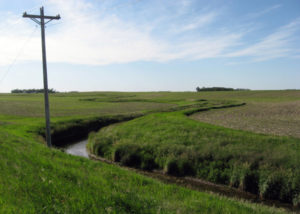Tracking the recent farm runoff legislation strategies in Iowa and Minnesota, it becomes clear – to the surprise of few – that attempts to formalize legislation aimed at curbing farm runoff will be met with staunch resistance.
This does not bode well for residences amongst and downstream of agricultural operations. Such operations continue to struggle with controlling the runoff they create from excessive animal manure.
A recent article by NPR (citing expert Greg Cox) discusses best

practices for reducing farm runoff. Ag runoff, as has been mentioned many times here, is the primary contributor to harmful algae blooms (HABs). As ever, best practices always include creating sizable grass buffer spaces between cropped land and waterways.
Grass which carries a clear benefit for farmers. It can (and should) be harvested to feed and bed farm animals.
Such a basic strategy makes great sense when proposed in a vacuum. But, for farmers striving to pull every bit of revenue from each acre, such an approach may not always make financial sense. And, clearly, farmers have little interest in more governmental involvement — as is presented regarding Iowa legal battles in this recent article from US News and World Report.
The push-and-pull here is inevitable, oh-so predictable, and the least productive method for solving the nationwide and global challenge of HABs.
